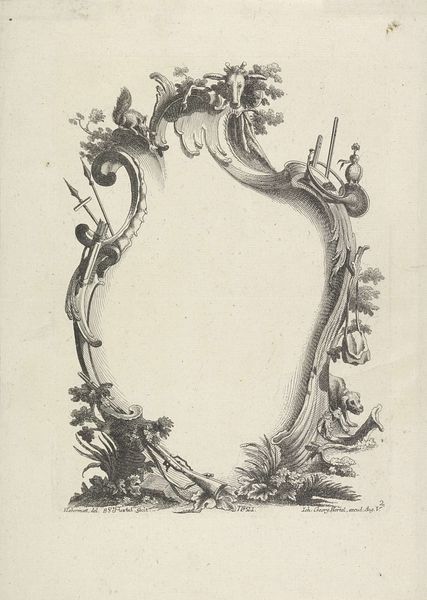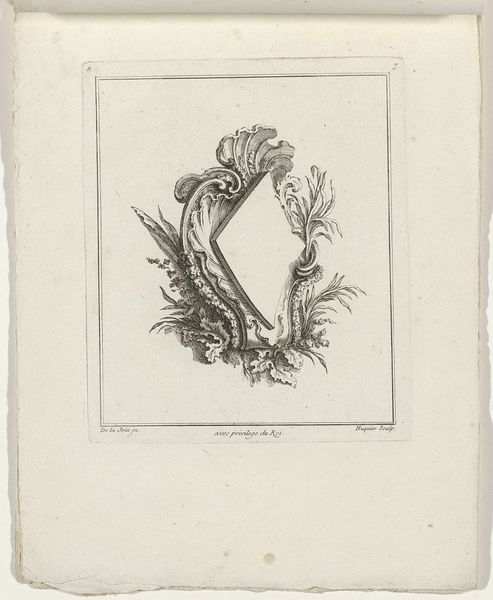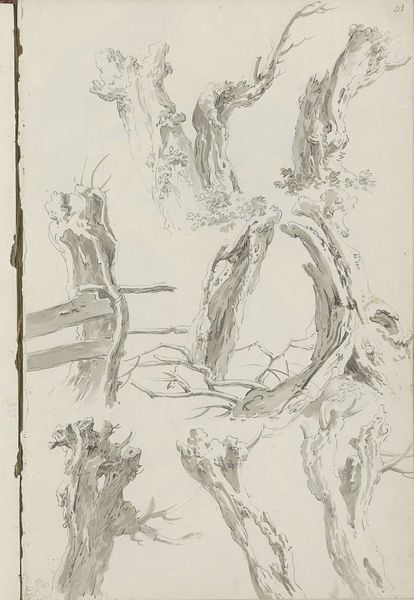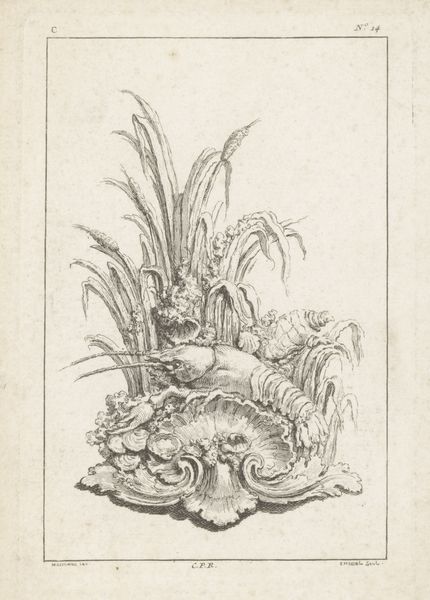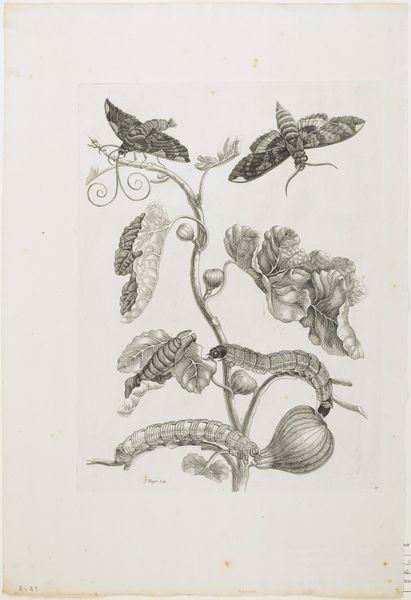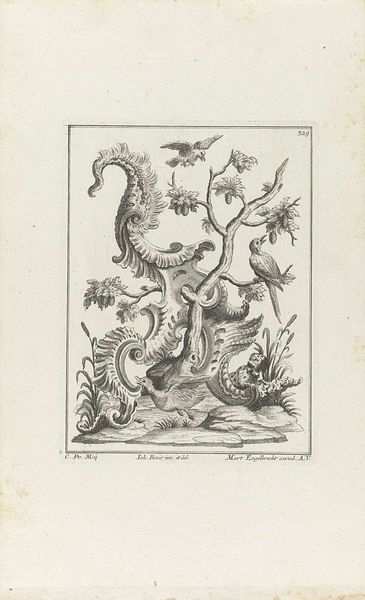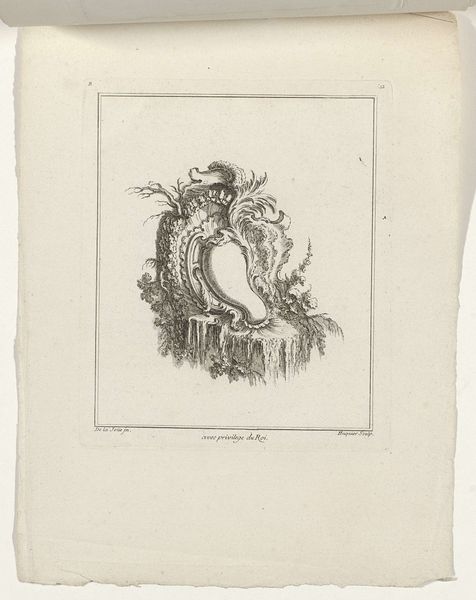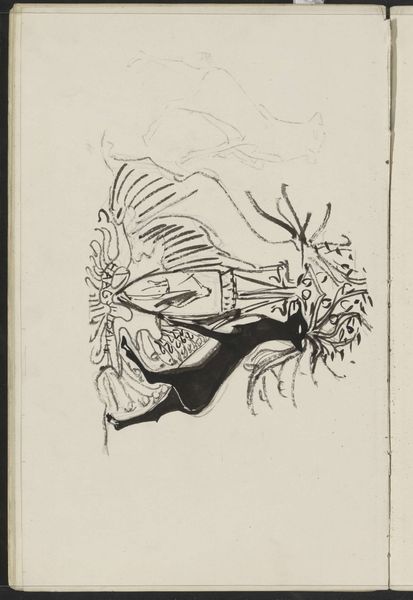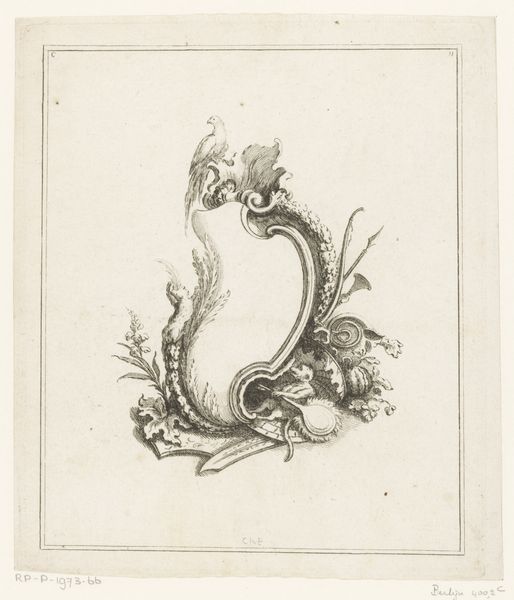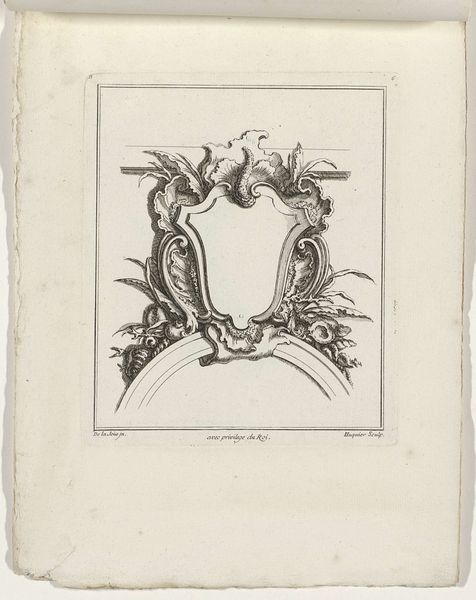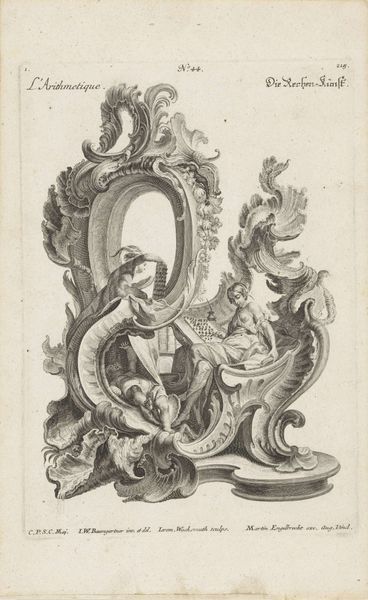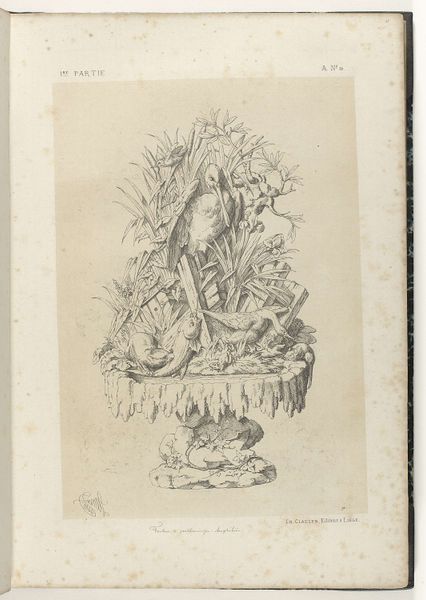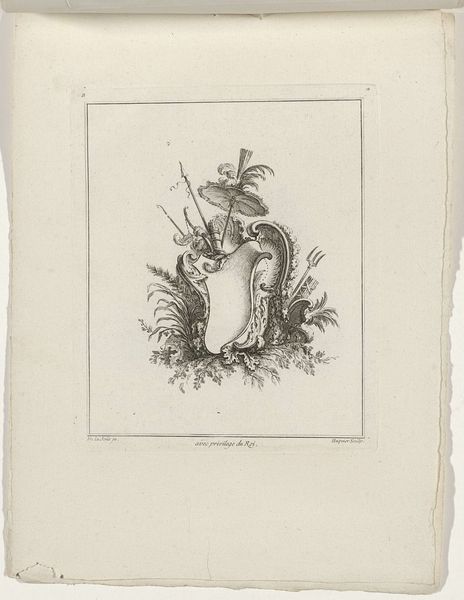
drawing, print, metal, engraving
#
drawing
#
baroque
# print
#
metal
#
pencil sketch
#
form
#
pen-ink sketch
#
line
#
engraving
Dimensions: height 243 mm, width 178 mm
Copyright: Rijks Museum: Open Domain
Curator: Welcome. We’re looking at "Cartouche met maritieme objecten," a drawing created sometime between 1731 and 1775. The artist was Johann Georg Hertel. Editor: It’s elegant, almost playfully so. I am drawn to the etched lines and baroque form. A sort of celebration of seafaring life, perhaps meant for framing a map, or crest. Curator: Indeed. It presents as an ornate frame brimming with maritime imagery. We see anchors, tridents, fishing rods, nets, all intertwined with decorative flora. Consider how these objects transform into symbols through their placement and rendering. Editor: I'm more interested in what's suggested about its creation. This would have taken specialized engravers, various tools, probably a workshop setting of artisans, carefully etching this plate. The uniformity of line speaks to a well-developed, almost industrial print process, at least, that’s the precursor of it. Curator: Notice the cartouche's blank space at the center? It is inviting us, the viewer, to impose meaning, memory, or even future aspirations onto this framework, relying on familiar symbols for conveying concepts of maritime dominance, or simple maritime commerce. Editor: All that symbolism hangs on material realities. Where was this printed, and distributed? For what specific purpose? Was it used to inspire voyages? As mere decoration? These are tangible questions relating to material life. Curator: It’s precisely this interplay of tangible object and intangible idea where the beauty resides. The image exists both as ink on paper and a constellation of nautical ambitions. The enduring power of these maritime symbols persists across centuries, connecting us to historical aspirations. Editor: Well, looking at the way the plate would have been etched and used in the printmaking, I'd say it underscores how deeply materiality influences even our most abstract interpretations. It gives context to ambition. Curator: A fitting perspective, grounding the image in the concrete world. Thank you. Editor: My pleasure.
Comments
No comments
Be the first to comment and join the conversation on the ultimate creative platform.

